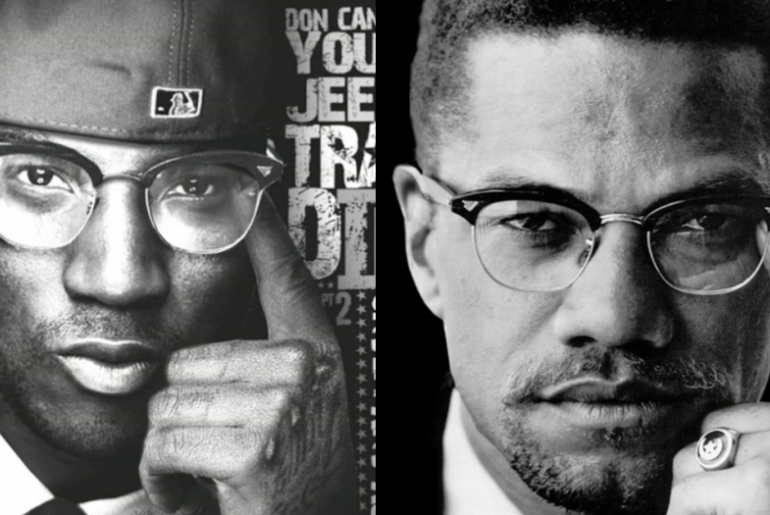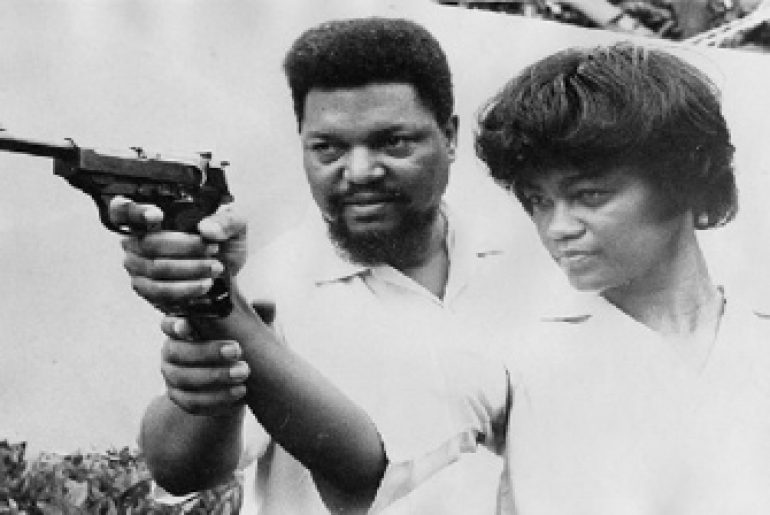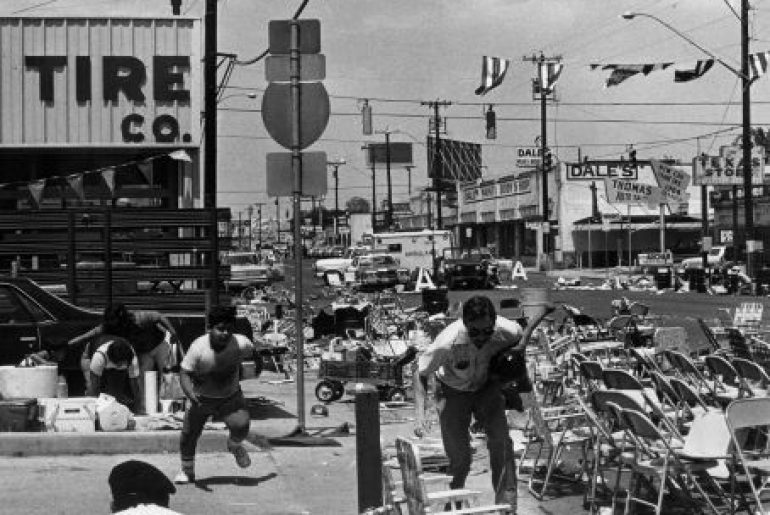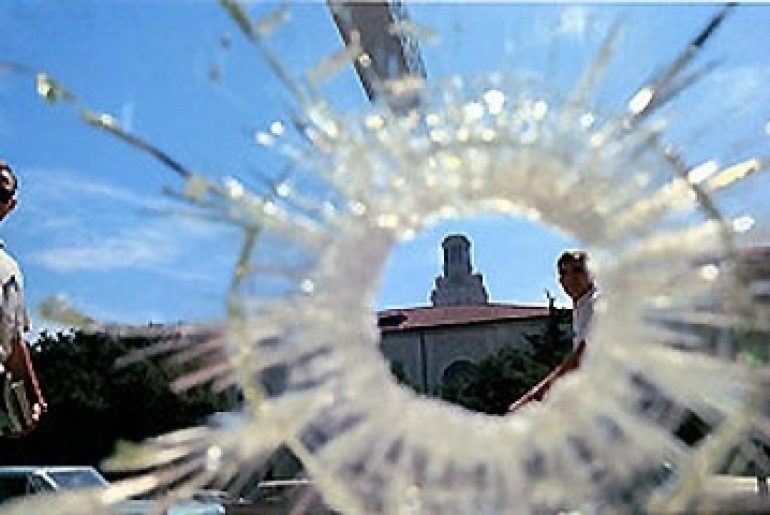Sports fans often imagine that they have a kind of partnership with their favorite teams: their cheers make a crucial difference in those final moments of the game; their ticket purchases make the team economically viable and thus competitive; their commitment to sameness protects the team against the forces of ‘political correctness’, ‘candy-assness’ and other meddling. So, when a star athlete jumps ship or a team leaves town or the team itself reaches a plateau and begins to appeal to a new audience, the old fans feel betrayed and neglected. The fan has in a sense lived vicariously through the team and its players – something I call ‘vicarious ballin’ – which I think explains some of the push back Michael Sam has gotten since coming out of the closet and pursuing a career in the NFL. Reactions to the Sam announcement have of course run the gamut from outright…
https://vimeo.com/97284525 American Moai is an exploration of the prison industrial complex and its similarities to the ‘moai’ of Easter Island. The moai are huge statues built to stand guard over the people of Easter Island, but the dedication to their construction would contribute greatly to the collapse of the island’s economic and political system. Prisons are having a similar impact on American society. Watch American Moai to find out why.
Civilizations are remembered for the monuments they build, but what is seldom explored is the degree to which those monuments define and in some cases destroy the peoples that created them. The act of building monuments often necessitates the creation of interconnected groups and institutions: someone to feed and house the workers; someone to manage the flow of information and documents; someone to procure materials; someone else to transport them. These groups, united by interests and profit, are what we today call ‘industrial complexes’ and played a pivotal role in building complex and resource draining structures in two seemingly unrelated places: Easter Island, a tiny island famous for huge statues called ‘Moai’ and the United States of America the prison capital of the world. Easter Island is a small scrap of land about 2300 miles from Chile and 1300 miles from Polynesia’s Pitcairn Islands. Stone statues called ‘Moai’ are the…
https://vimeo.com/90189265 There was a funny twitter beef a few weeks ago between Lord Jamar of Brand Nubian and comedian Marlon Wayans about emasculation or feminization in hip hop culture. What’s interesting about the debate to me is that what many are calling emasculation or feminization is really just another manifestation of something author Thomas Franks called the ‘commodification of dissent’. There are political or social claims at the core of hip hop that many relate to. It’s in the voice of the outsider, the ignored, and the misunderstood. Tupac alluded to this in his reference to a ‘rose that grows through the concrete’, it will be beaten, battered, and not quite as pleasant to look at as others, but its struggle lends it a kind of transcendent beauty. So, in the minds of many, the uglier side of hip hop hid deeper and more urgent claims. To judge it solely…
Wednesday night Arizona governor Jan Brewer vetoed SB1062, a controversial bill that was supposedly intended to protect the religious freedoms of businesses and individuals who might out of ‘sincere belief’ need to discriminate against gay patrons or gay weddings. The bill had all of the markings of a political stunt. It was big, vague, ill-conceived and promised to solve a problem that only exists at the margins while at the same time creating a myriad of new problems. The governor had vetoed a similar bill in 2012, so why did the Arizona legislature bother? A closer look at the sponsors of the bill and the political climate on the right – past and present – offers some possible answers. A peculiar thing happens when you Google the sponsors of SB 1062 – Reps Nancy Barto, Bob Worsley and Steve Yarbrough. Once you wade through the blistering attacks and criticism by…
In writing the movie “Dr. Strangelove”, Stanley Kubrick and his co-writers faced a problem. They had set out to write a serious movie about the dangers of nuclear proliferation, but every time they talked about the characters and their interactions they began to laugh – hysterically. There was nothing inherently funny about mushroom clouds, war rooms, bomb shelters or apocalyptic wastelands, but the notion of creating weapons that could wipe out all human life on earth for the sake of ‘security’ was so ridiculous that it was hilarious. Sometimes comedy gives us the distance that we need to comprehend the true horror of a predicament, which brings me to the state of popular music. I’ll admit at the outset that I’m not the target audience for most popular music, so I don’t expect to like it, but it doesn’t necessarily have to suck. I’ve been wondering for a while, when…
The angry mob of white southerners that surrounded Robert Williams and his entourage in June of 1961 met a familiar sight with a deeply disturbing variation. The mob, the police and even the federal government in its absence were following the Jim Crow playbook to the letter, but on this particular day things were not going as planned, so much so that an old man in the crowd wept bitterly. “God damn, God damn!”, the old man protested through tears, “What is this country coming to that the niggers have got guns! The niggers are armed and the police can’t even arrest them!” The old man was partially right. Robert Williams and his fellow activists were armed, trained and refused to hand their weapons over to the police without a fight: the police couldn’t stop Robert Williams. But then neither could the Klan or the FBI or the CIA. As…
For most Americans gun violence is a problem for the ‘other’: the poor, ‘minorities’, the mentally ill. When gun violence veers into the mainstream it’s usually in the guise of a political assassination, a tabloid style crime of passion, a celebrity suicide, or a mass shooting. According to the FBI, mass murder involves an individual murdering four or more persons in a relatively short time frame without a ‘cooling off period’. Mass shootings as a kind of mass murder, are subdivided by many criminologists into three separate categories: 1) family violence, 2) deaths linked to others crimes like drug deals or robberies, and 3) the category that we will be exploring, ‘public massacres’. Of the 31,000 firearm related deaths in 2010, 62% were from suicides, 36% were homicides, and 2% were unintentional ((Reducing Gun Violence in America, Daniel Webster, p.3)). Public massacres are a kind of mutant strain of gun…
One of the ways institutions preserve power is through creating rules and regulations that are labyrinthian, archaic and seemingly unchangeable and then repeating them over and over again in a slogan, giving them an air of legitimacy that unfortunately the public buys into. The Bush administration’s claim that ‘If we don’t attack them there, we will have to do it here’ doesn’t quite resonate like it did back in 2001. And a politician claiming that ‘What is good for GM is good for America” would probably be given the side-eye these days. Conventional wisdom born of institutional sloganeering rarely holds up under scrutiny, so when I hear people regurgitate NCAA rhetoric against student athletes receiving payment it troubles me. Our first instinct is to immediately launch into an argument about how much money colleges do or do not make from college sports, which forces us to wade into the murky…
This past Sunday marked the anniversary of the mass shooting at Sandy Hook Elementary school which claimed the lives of 26 people, among them 20 children. In the weeks leading up to the anniversary those affected by it began preparing, each in their own way: news outlets ran stories on the perpetrator and the victims; pundits and lobbyists debated issues surrounding the shootings; families argued for both privacy and advocacy; and in Colorado a young man went on a killing spree. Like Adam Lanza, he was suicidal and homicidal. Like the Columbine killers – Dylan Kleibold and Eric Harris – he was armed with guns and explosives. Like Charles Whitman his targets were specific people and institutions, but as more facts emerge we will likely learn that his hatred was somewhat broad and all-encompassing. He may or may not have been mentally ill, but more than likely he will be…








